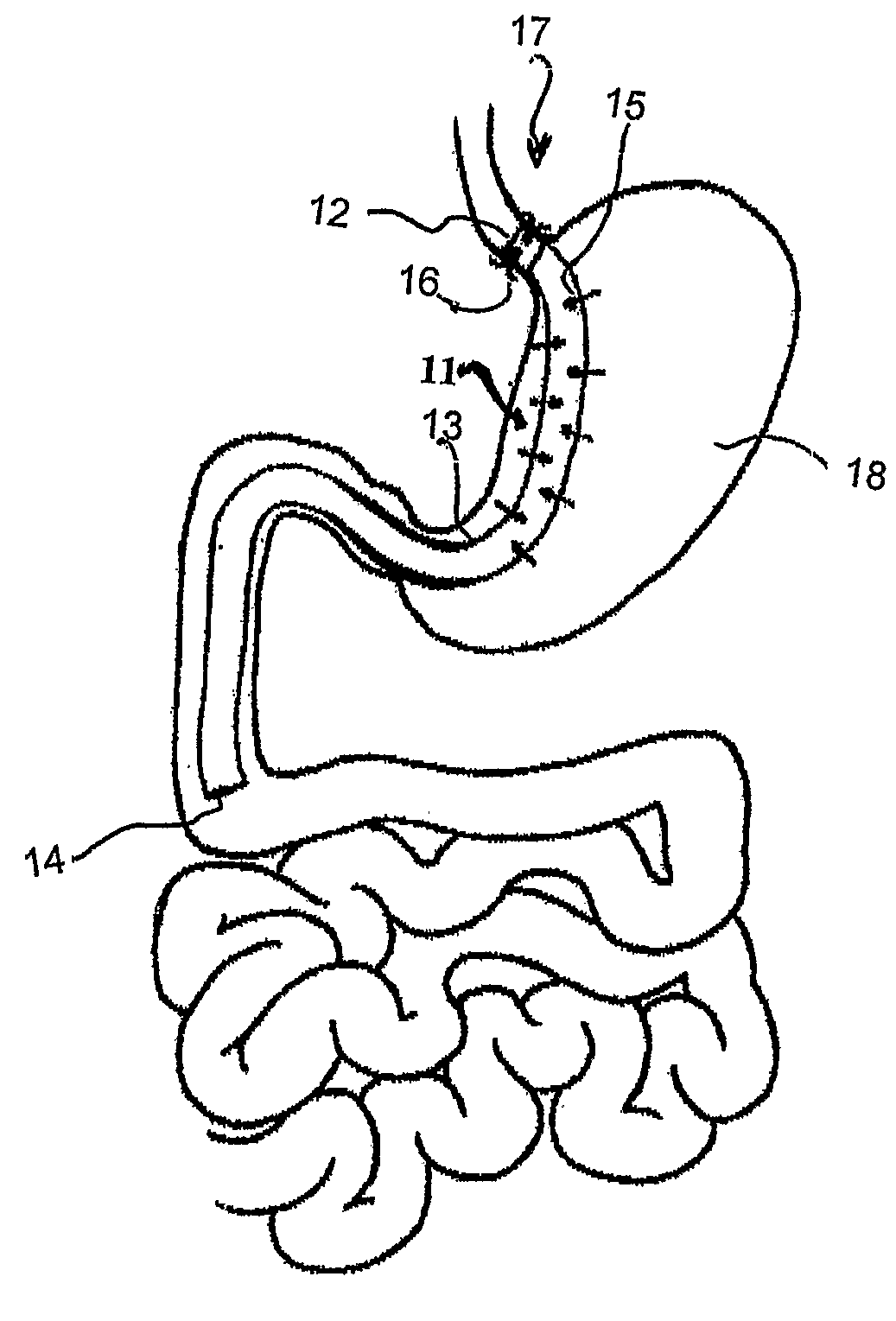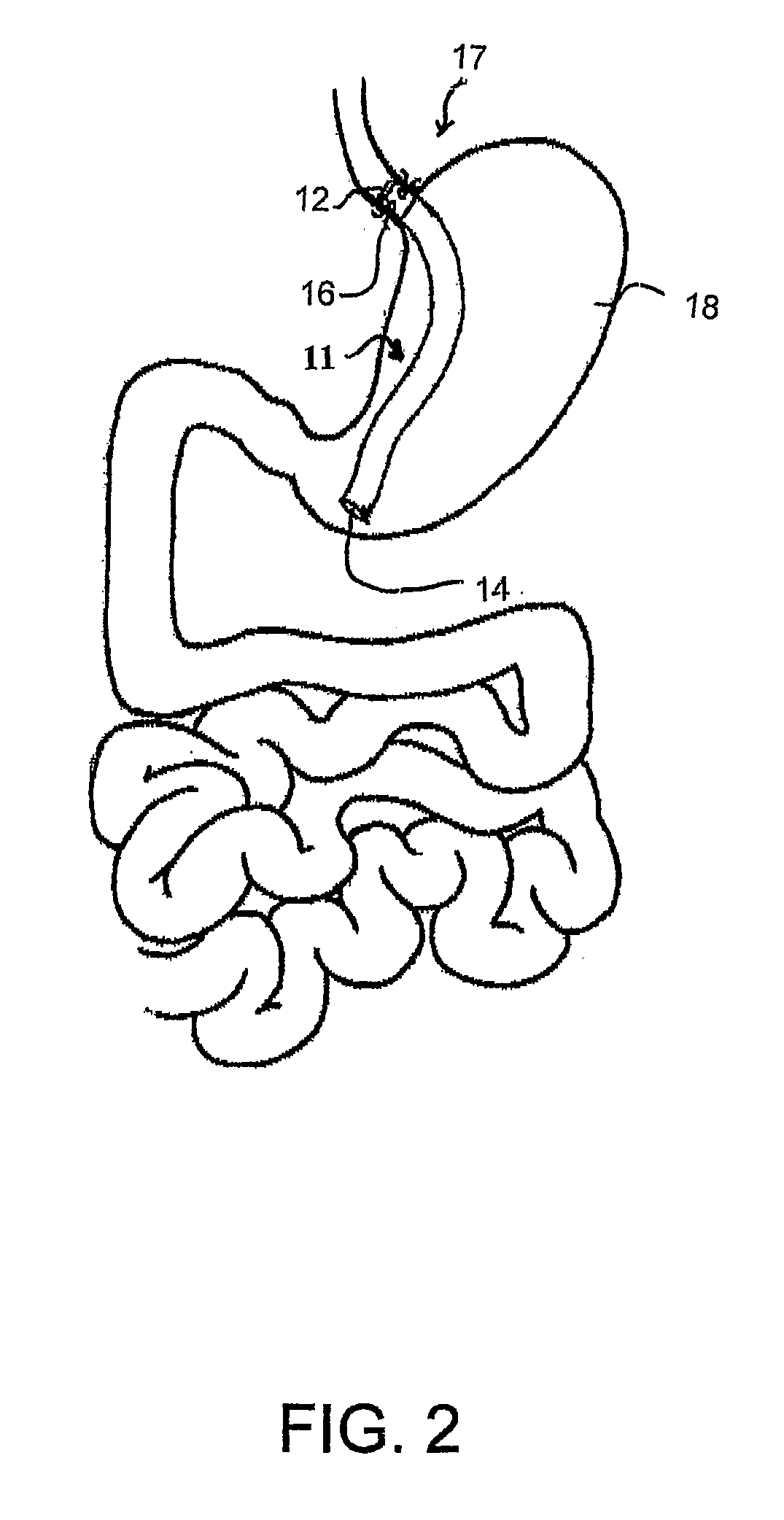Medical Device and Method For Controlling Obesity
a medical device and obesity technology, applied in the field of medical devices and methods, can solve the problems that none of the prior endoscopic methods to treat gerd have been described as helping patients lose weight, and excess weight and obesity have become a major health problem, so as to reduce the speed of food, slow down the progression of food, and reduce the size of the stomach reservoir
- Summary
- Abstract
- Description
- Claims
- Application Information
AI Technical Summary
Benefits of technology
Problems solved by technology
Method used
Image
Examples
examples
[0054]The following non-limiting example is presented to illustrate one embodiment of the invention. In this example, the anti-reflux device for the treatment of GERD, described in U.S. Pat. No. 5,861,036, held in place with a ring as described in U.S. Pat. No. 6,764,518 in an obese patient with GERD and a hiatus hernia who could not lose weight on a conventional therapy of diet and exercise. It was observed with great surprise that the patient lost a significant amount of weight.
[0055]The device had a volume of approximately 50 cc. This 61 year old male subject of this example had had a failed open Nissen fundoplicature operation for GERD 15 years previously and had severe pathological reflux as measured by 24 hour pH metric testing in the esophagus while on medical therapy, that is double dose proton pump inhibitors (Pantoprazole 40 mg BID). He refused repeat surgery.
[0056]The subject patient accepted to enter a preliminary trial a tubular valve of the invention for a period of 6 ...
PUM
 Login to View More
Login to View More Abstract
Description
Claims
Application Information
 Login to View More
Login to View More - R&D
- Intellectual Property
- Life Sciences
- Materials
- Tech Scout
- Unparalleled Data Quality
- Higher Quality Content
- 60% Fewer Hallucinations
Browse by: Latest US Patents, China's latest patents, Technical Efficacy Thesaurus, Application Domain, Technology Topic, Popular Technical Reports.
© 2025 PatSnap. All rights reserved.Legal|Privacy policy|Modern Slavery Act Transparency Statement|Sitemap|About US| Contact US: help@patsnap.com



